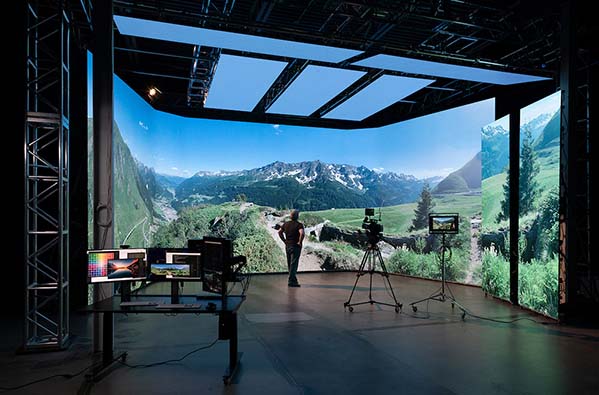
Introduction: The Golden Age of Movies in the Digital Era
Movies have always been a staple of entertainment, but in recent years, the film industry has undergone significant transformations. With the rise of streaming platforms, the global reach of films has expanded, making cinema more accessible than ever. However, the landscape is constantly evolving, and many movie lovers are wondering—what does the future hold for the big screen?
In this article, we’ll explore how streaming services, technological advancements, and evolving audience preferences are shaping the future of movies, and what it means for both creators and viewers alike.
The Rise of Streaming Services: A Game-Changer for Movie Lovers
The arrival of streaming platforms like Netflix, Disney+, Amazon Prime Video, and HBO Max has revolutionized how we consume movies. On-demand access to an enormous library of films has allowed audiences to watch movies anytime, anywhere, and on any device. But this shift has had significant implications for the film industry.
Here’s how streaming services are changing the movie landscape:
-
Increased accessibility: With streaming platforms, films are now available to global audiences at the touch of a button, breaking down geographical and financial barriers.
-
Original content: Streaming giants have invested heavily in creating original films and series, often leading to creative risks and experimentation. This has given rise to new genres, unique storytelling, and a wider variety of content for niche audiences.
-
Shifting release strategies: The pandemic has accelerated the trend of releasing movies directly on streaming platforms rather than in theaters, with films like Mulan and Wonder Woman 1984 skipping the traditional theater release. This has sparked debates over the future of theatrical releases.
While streaming offers unmatched convenience, some argue that it could mark the end of the traditional movie theater experience, leading to a shift in how we view movies as cultural events.
The Evolution of Movie Genres: What’s Hot and What’s Not?
As audiences’ preferences shift, movie genres are evolving to meet new demands. Superhero films, sci-fi, and action blockbusters continue to dominate the box office, but there’s a growing interest in new genres and unique storytelling approaches.
Here’s what’s trending in movie genres:
-
Superhero and franchise films: The Marvel Cinematic Universe (MCU) and DC Extended Universe (DCEU) remain powerhouses in modern cinema, offering action-packed spectacles with deep character arcs and interconnected storylines.
-
Socially conscious films: Movies that tackle important societal issues, such as race, gender, and mental health, have gained traction. Films like Parasite (2019) and Joker (2019) have resonated with audiences seeking more meaningful and thought-provoking narratives.
-
Horror: The horror genre has seen a renaissance in recent years, with films like Get Out (2017) and A Quiet Place (2018) blending suspense, social commentary, and emotional depth.
The future of film genres will likely involve more genre-blending and experimental storytelling as filmmakers strive to cater to a diverse and ever-changing audience.
The Role of Technology in Cinema: From CGI to Virtual Reality
Technology has always been a driving force in cinema, but recent advancements have pushed the boundaries of what’s possible on the big screen. Visual effects (VFX), computer-generated imagery (CGI), and motion capture have already revolutionized the filmmaking process, but what’s next?
Here are a few ways technology is shaping the future of movies:
-
Virtual Reality (VR) and Augmented Reality (AR): VR and AR are creating immersive movie experiences that transport audiences directly into the world of the film. Though still in its early stages, VR cinema could become a major trend in the coming years.
-
AI and machine learning: Artificial intelligence is being used to enhance post-production, from creating digital effects to improving sound design. Some studios are even experimenting with AI to generate scripts and assist in the editing process.
-
Improved CGI and motion capture: With advancements in CGI and motion capture technology, filmmakers can now create lifelike characters and stunning visual effects that were previously impossible or cost-prohibitive.
As technology continues to evolve, it will not only impact how movies are made but also how we experience them.
The Impact of Globalization: Movies as a Universal Language
In an increasingly interconnected world, movies are becoming a universal language, transcending cultural boundaries and appealing to global audiences. Hollywood may still dominate the industry, but international cinema is gaining recognition, with films from countries like South Korea, India, and Mexico garnering critical acclaim and massive box-office success.
Here’s how globalization is influencing the film industry:
-
Global box office success: With the rise of global streaming platforms and international co-productions, films are now reaching wider audiences. For example, Parasite made history at the 2020 Academy Awards, becoming the first non-English-language film to win Best Picture.
-
Cross-cultural collaborations: Filmmakers are collaborating across borders, creating culturally rich and diverse films that appeal to audiences worldwide.
-
The rise of local content: Streaming platforms are increasingly investing in local content to cater to regional tastes. For example, Netflix has produced popular Indian films and series, while Disney+ has launched Korean-language films to tap into the Asian market.
The globalization of cinema has expanded the film landscape, offering viewers a broader array of voices, stories, and cultural perspectives.
The Future of Movie Theaters: Will They Survive?
The traditional movie theater experience has long been an integral part of the movie industry, but its future is uncertain. While streaming has provided convenience, many moviegoers still prefer the communal, immersive experience of watching films on the big screen.
Here’s what might shape the future of movie theaters:
-
Hybrid release models: As the pandemic has shown, hybrid releases—where films debut in theaters and simultaneously on streaming platforms—may become the norm.
-
Experiential cinema: Movie theaters may evolve into more immersive experiences, incorporating technologies like VR, AR, and 4D to engage audiences in new ways.
-
Reimagining theater design: Some theaters are already reinventing themselves with luxury seating, gourmet food, and enhanced sound and visual experiences to compete with home viewing.
Despite challenges, the movie theater isn’t going away anytime soon. It will likely adapt and evolve to meet the demands of modern audiences.
Conclusion: The Exciting Future of Movies
The future of movies is bright, filled with exciting new possibilities brought about by streaming services, technology, and globalization. Whether you’re watching a superhero blockbuster in a theater or discovering an indie gem on your streaming platform, the landscape of cinema will continue to evolve in response to changing audience demands.
One thing is certain: movies will always be a powerful form of storytelling that captivates and connects us, no matter the platform or technology used to deliver them. The way we experience films may change, but the magic of cinema will endure.


